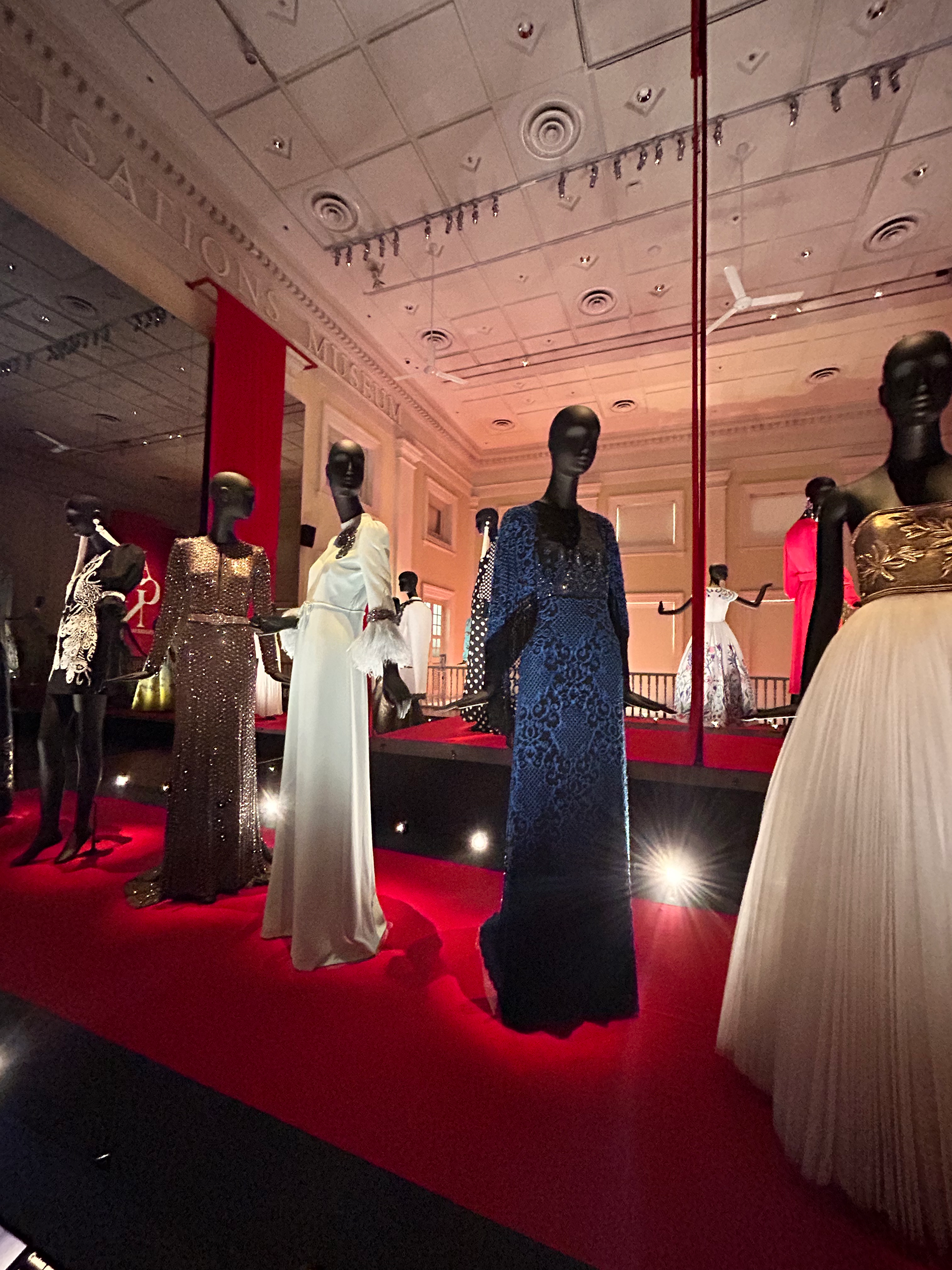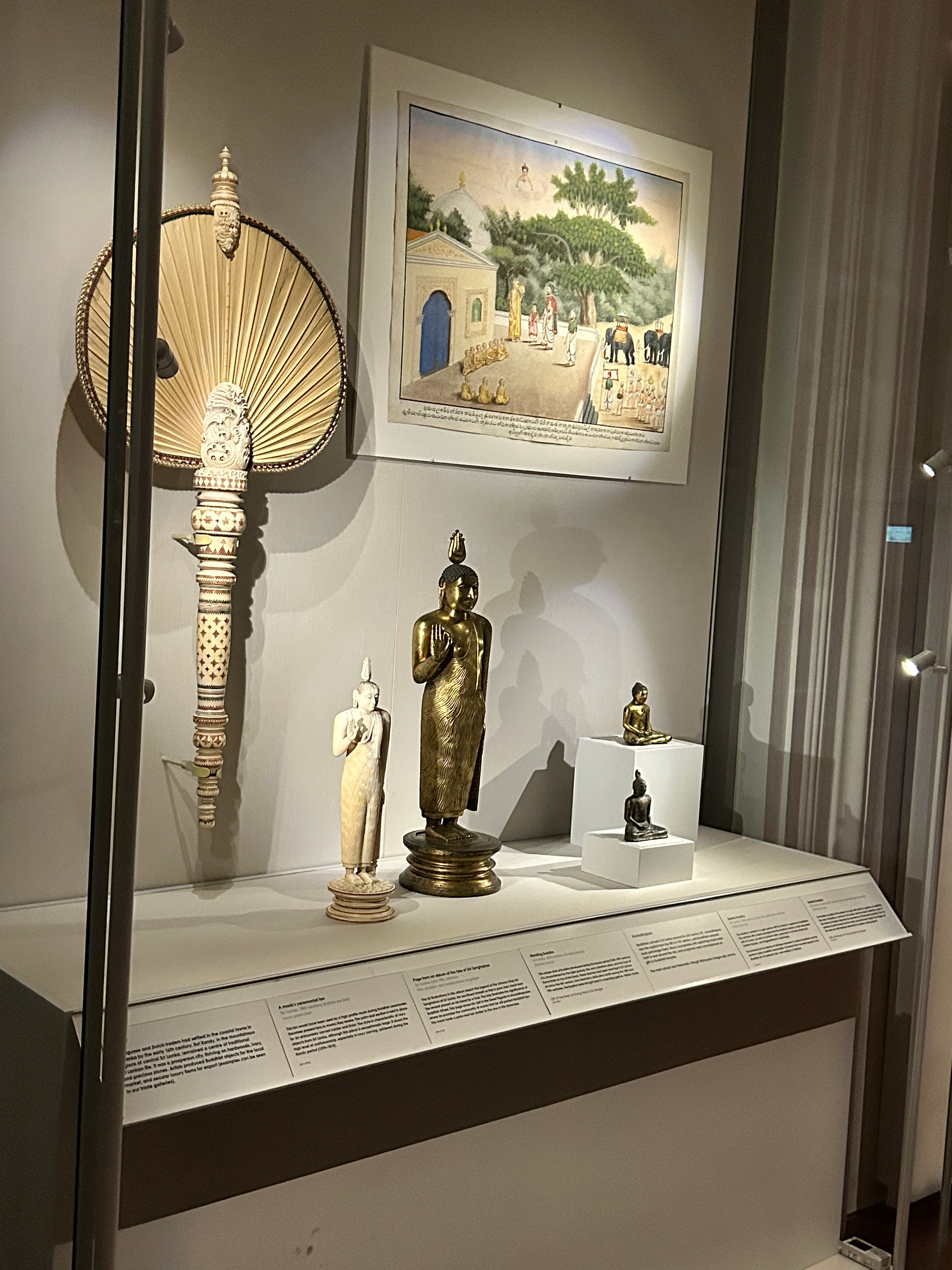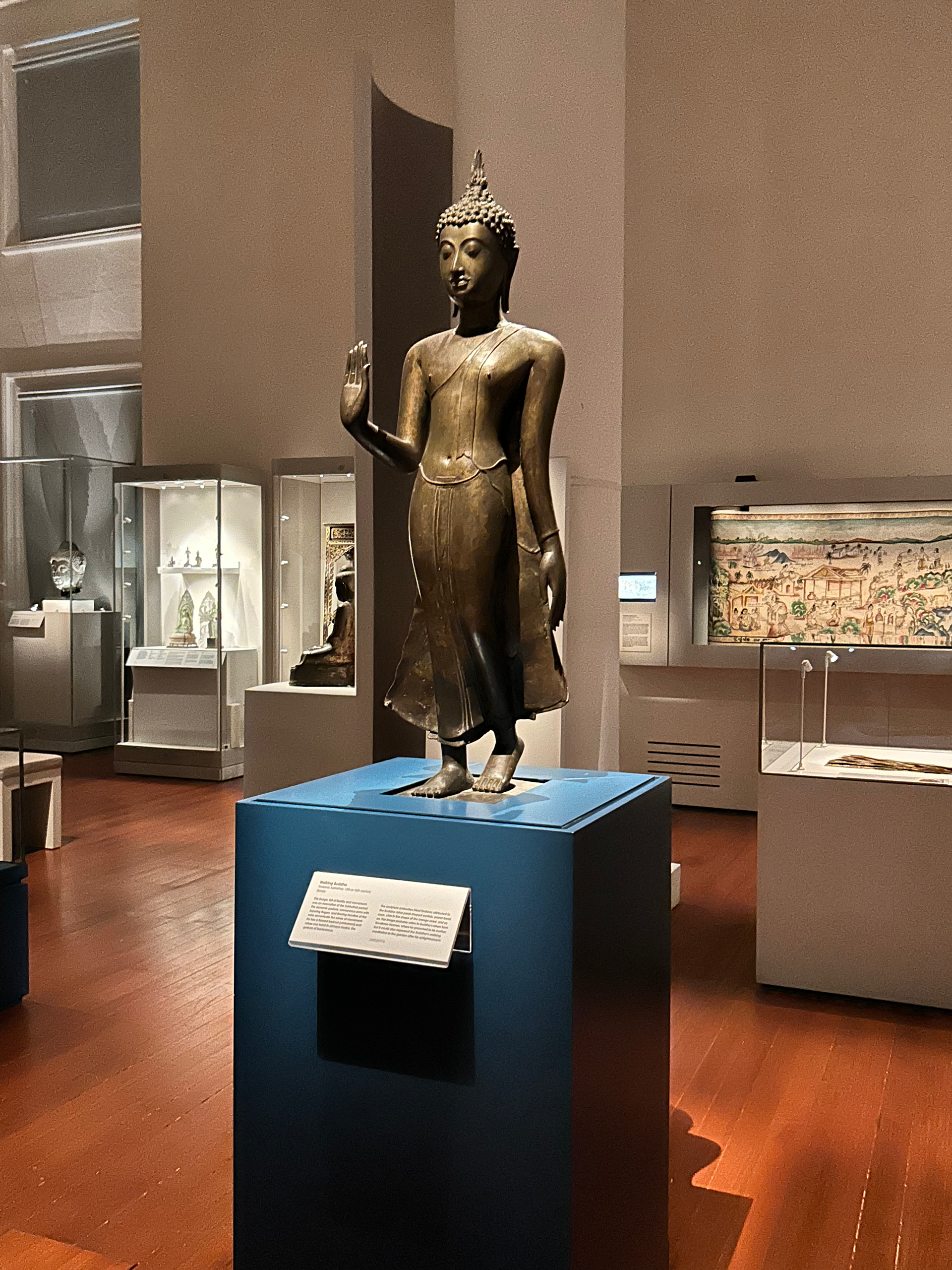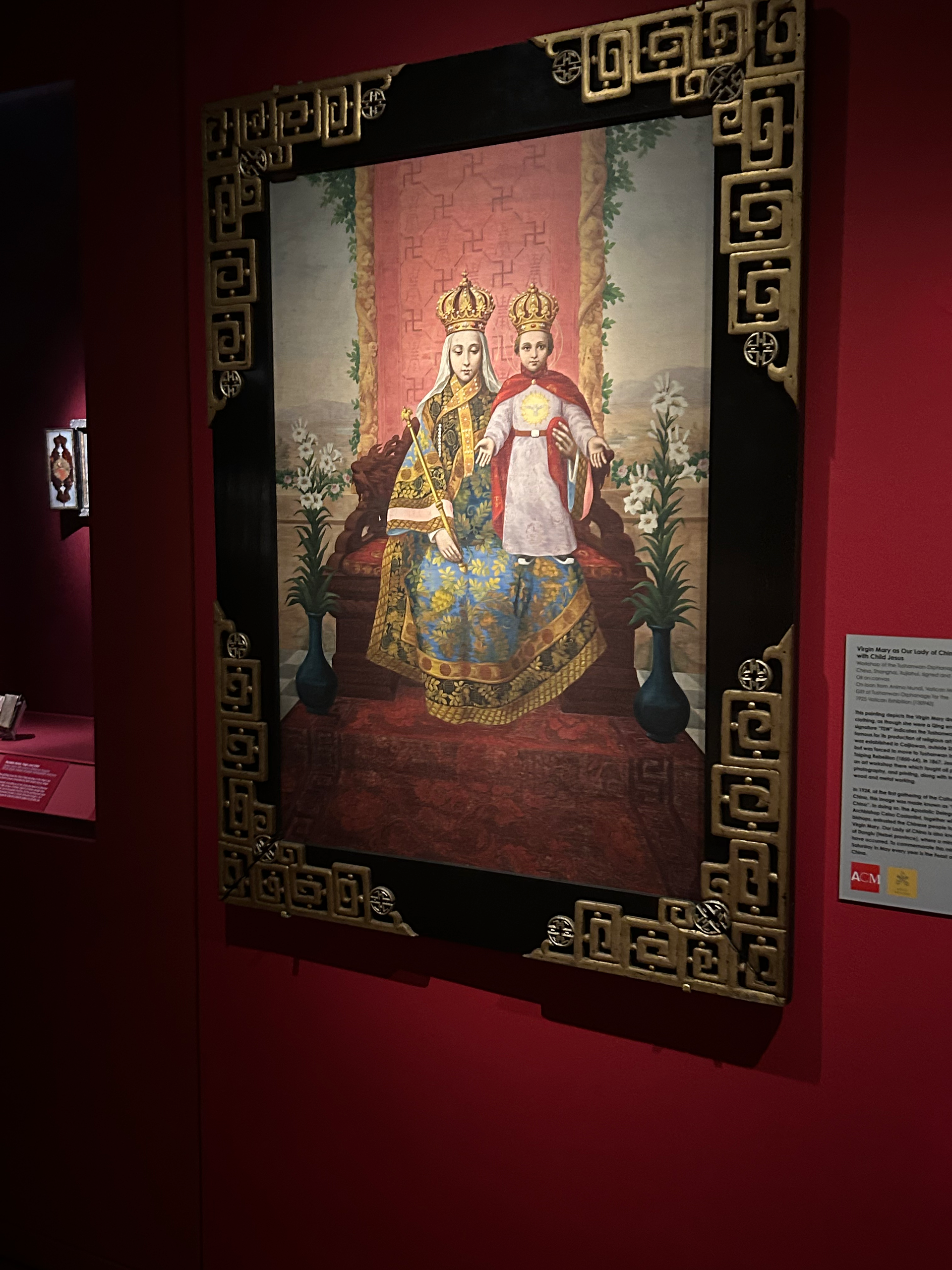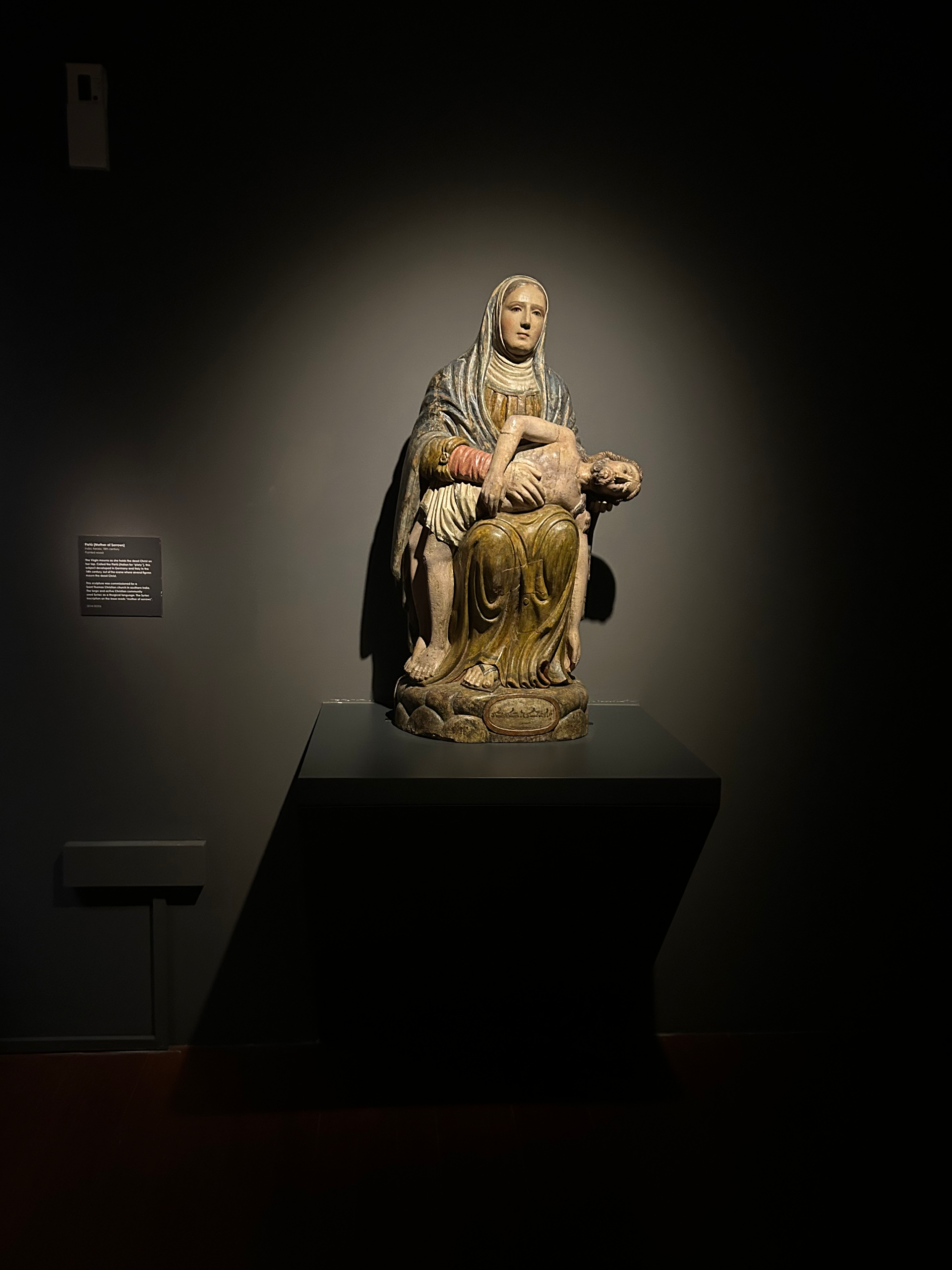On day two, we visited the Indian Heritage Centre (IHC) and Asian Civilisation Museum. Like the Peranakan Museum, the Indian Heritage Centre was vibrant with colourful artefacts, clothing, and galleries. It showcased the diverse facets of Indian culture, from its ancient roots to the present day, providing a deep understanding of the Indian diaspora in Singapore.
I particularly loved the interactive and hands-on activities like the rubbing station where we got to trace a 1835 Rupee coin, a police badge and business logos. It was satisfying seeing the intricate patterns and designs come to life which allowed me to appreciate the artistic aspects unique to the culture.
One of the collections that really fascinated me was the Passage to little India Oil on Canvas collection by Navin Rawanchaikul. The ‘multi-canvas panorama’ depicts highly detailed and emotive faces of the people of Little India in Singapore. The abrupt changes of the colour palette across the canvases from vibrant bright colours to monochrome represents the difference between past and present. The paintings which span 12-metres show people from different classes, occupations, and backgrounds. They are all positioned against significant cultural landmarks, highlighting the way culture binds them together. I thought it such a beautiful representation of people and culture; not to mention the art is incredible.
Being in the heart of little India, even outside the building we got to experience first-hand the rich Indian culture, symbols, and cuisine all around us. The colourful souvenir stalls that populated the area were highly attractive and slightly nostalgic for me as they reminded me of my own Egyptian culture and the similar souvenir stalls you can find in downtown Egypt.
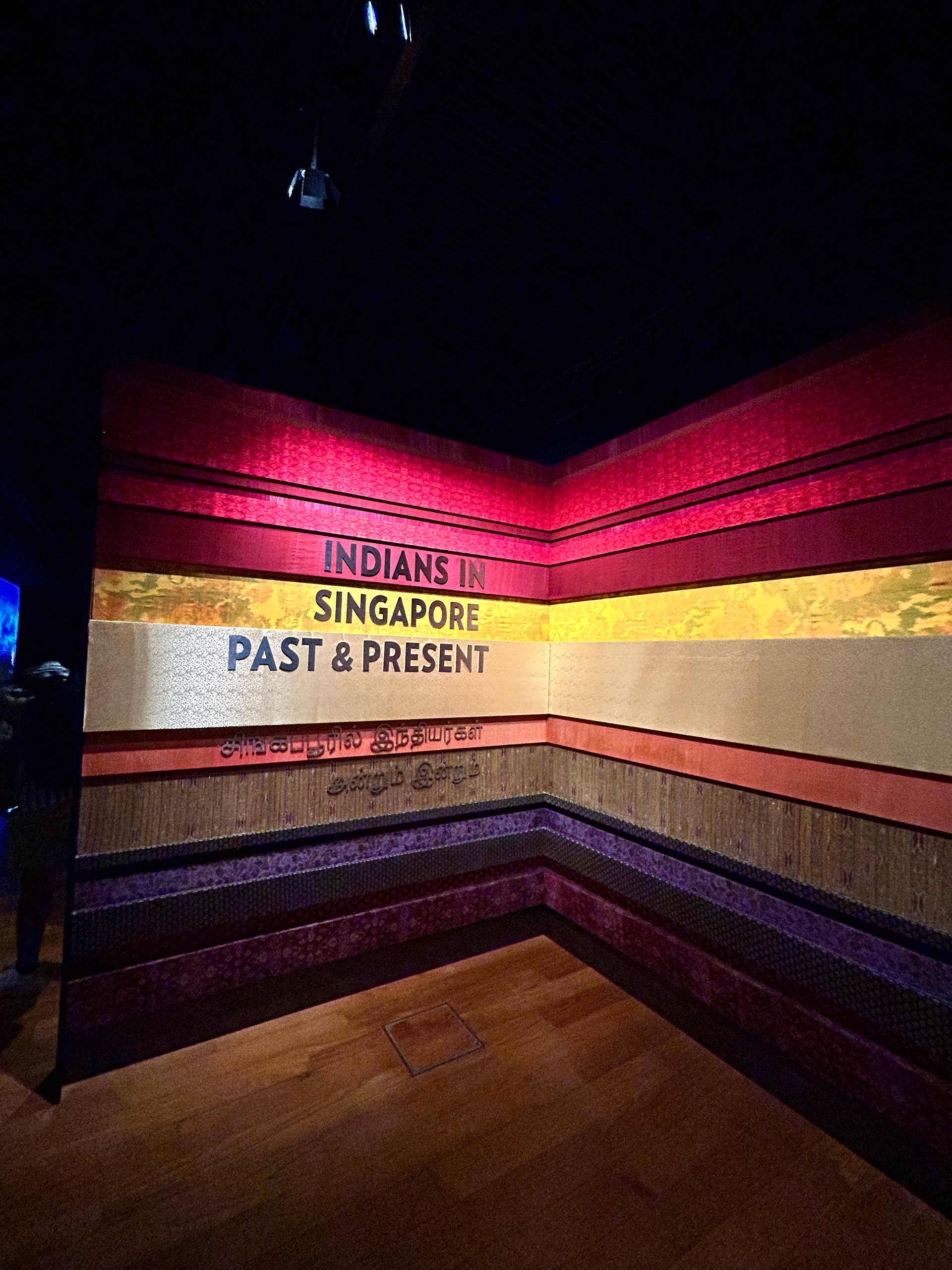
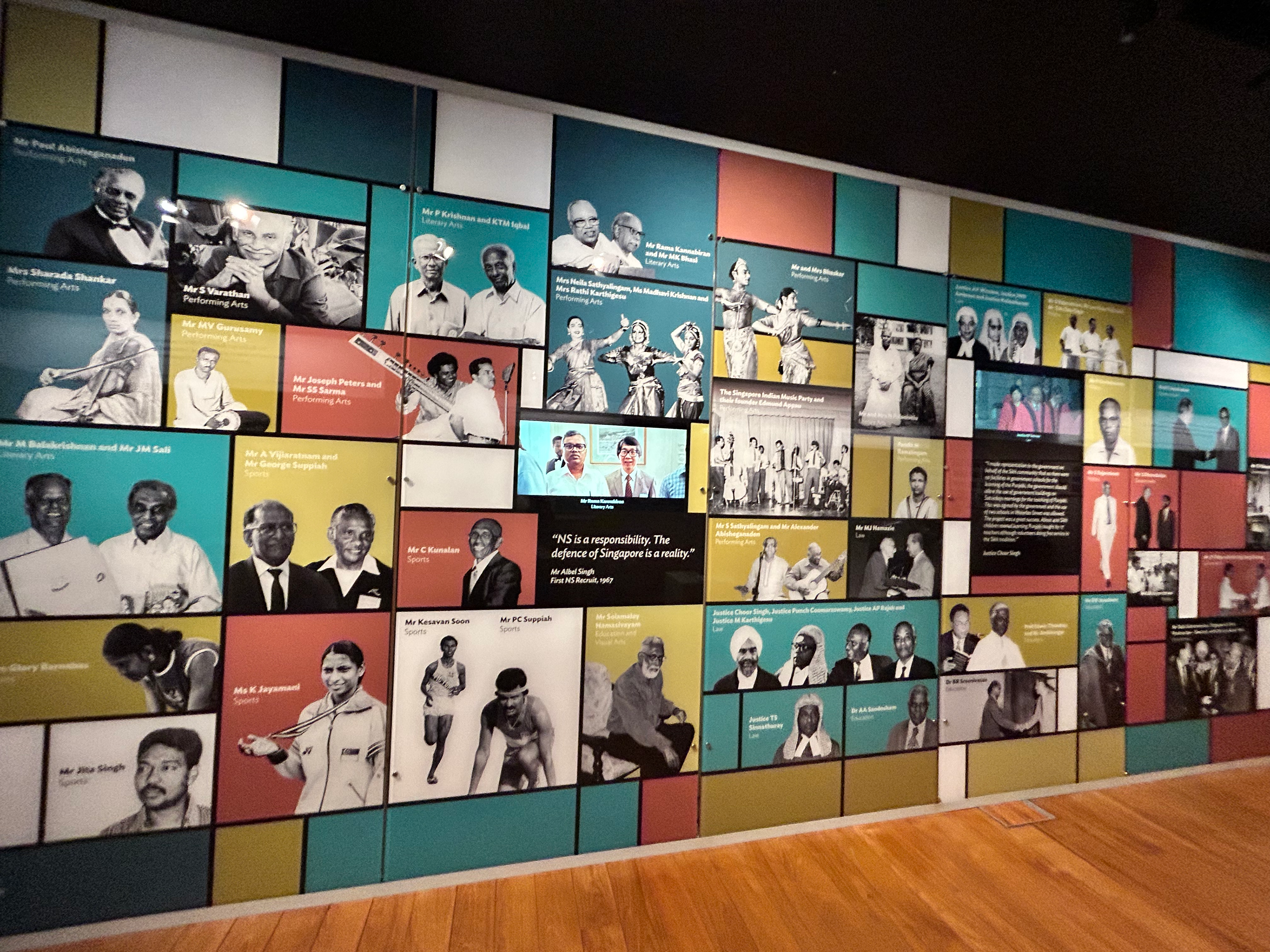


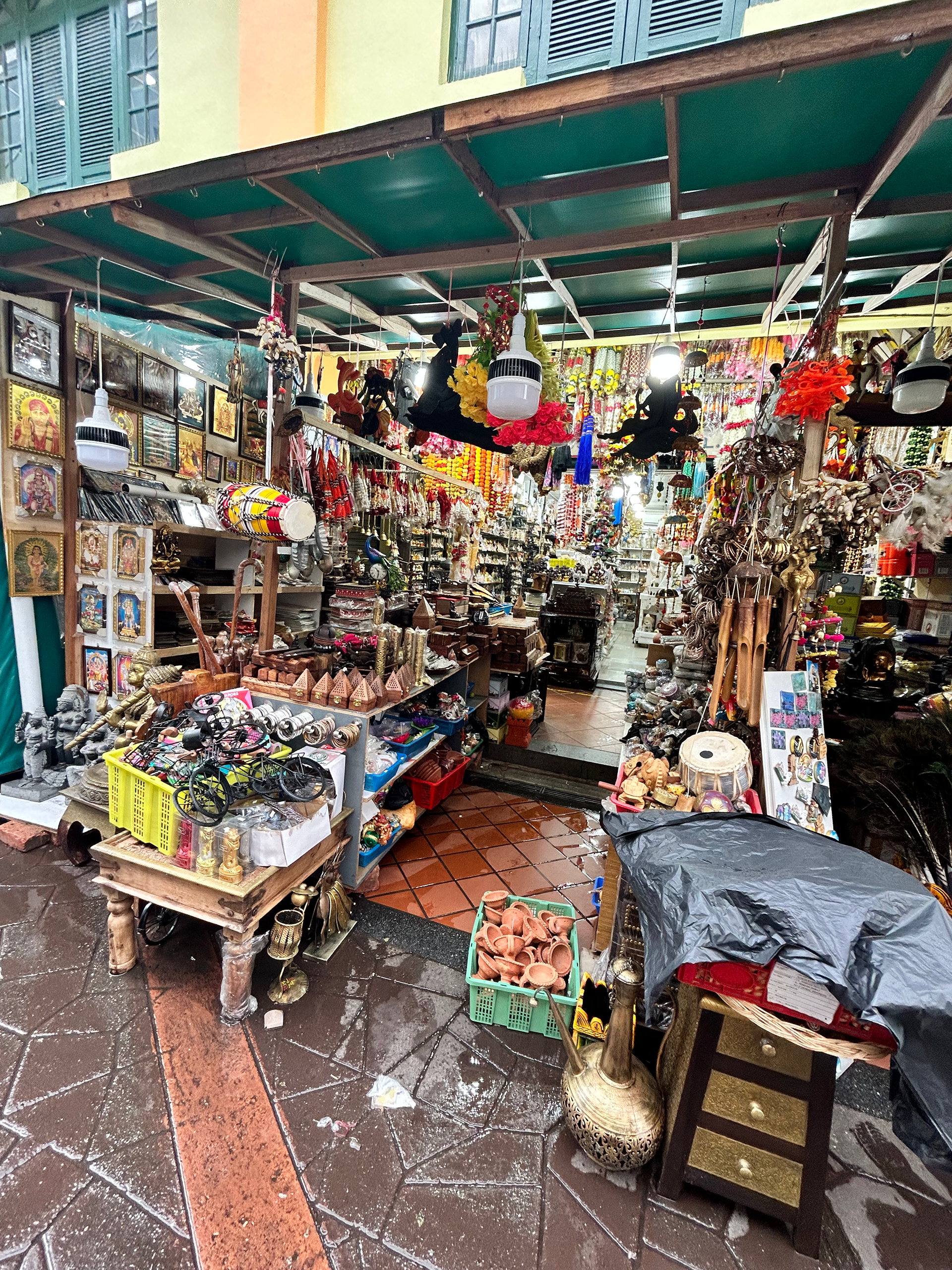
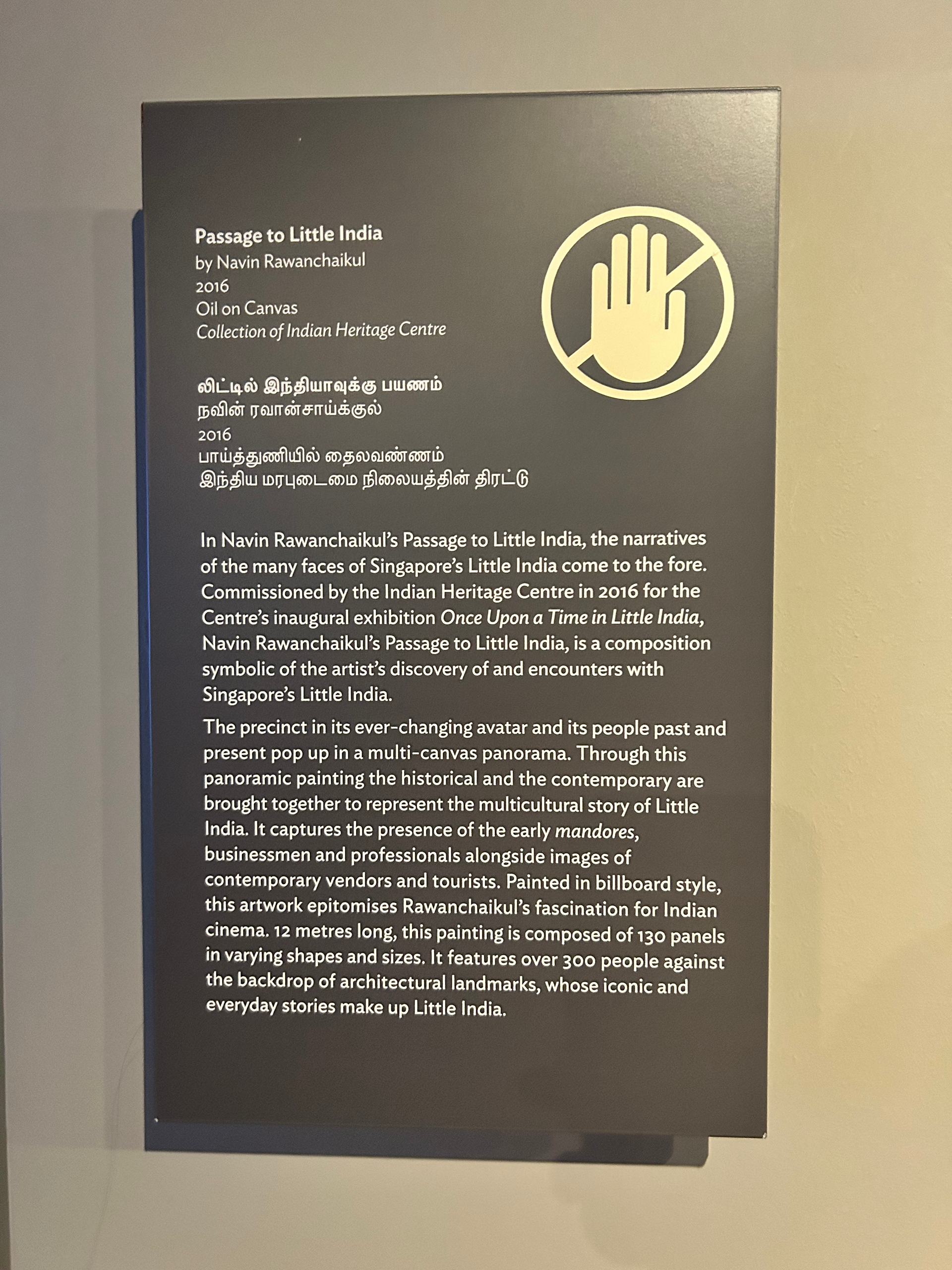
Our next stop was the Asian Civilisation Museum. The first exhibition we encountered was the Fashioning Singapore and the World exhibition by Singaporean fashion designer Andrew Gn. It consisted of a catwalk featuring a multitude of fashion items displayed on mannequins. The fashion items exhibit a blend of Asian and Western influences, indicating the significant multicultural aspect of Singapore. The dresses on display were elegant and each had an identity of its own due to variety of material, colours and fitting. It was incredible to recognise some of the traditional elements and how they were smoothly incorporated into a contemporary design.
The next part was a guided tour through the ancient religions and Christian art galleries. The Ancient religions gallery explored the spread of Hinduism, Buddhism and Jainism from India to China and onto southeast Asia. This exhibition focused on the various depictions of the deities to better communicate their attributes within different cultures. A simple example of this is the way some statues depict buddha’s enlightenment; in some cultures, this attribute is represented through the top knot on the head while in others this is represented by a flame on top of the head.
The Christian art exhibition was similar in that its depictions were unlike what I am used to seeing as a Coptic Christian, although there were similarities. I learnt that the methods and materials used to create the art were mostly Asian, however the subjects often presented Western features such as light skin and fair hair. This is exactly how traditional Coptic Christian art was created; the art style and techniques are Coptic however the subjects appear westernised.
